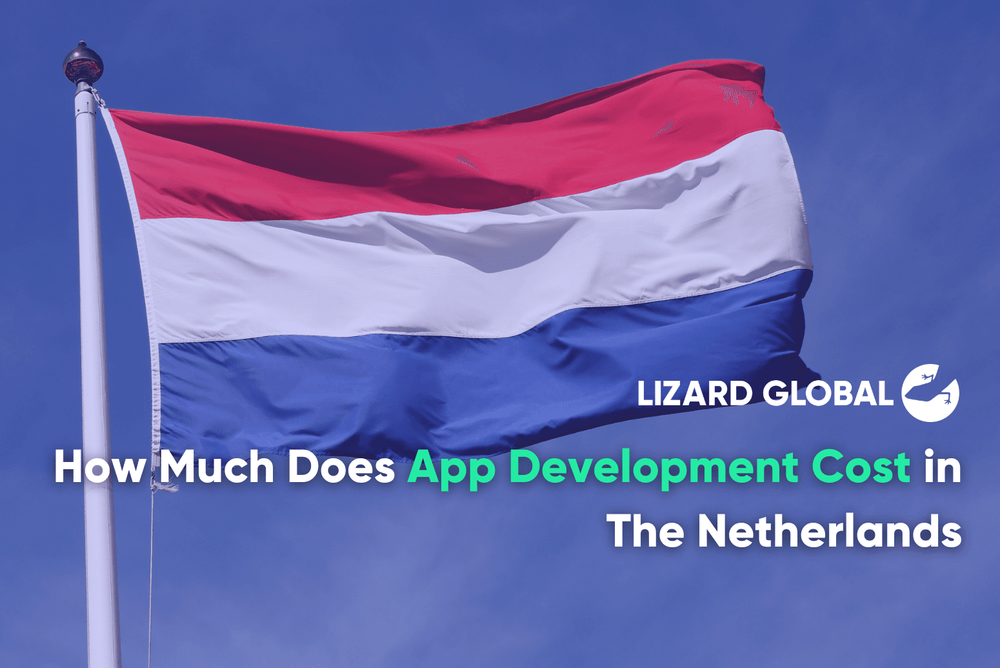What Are The Advantages of a Microservice Architecture?
Get the latest updates about our blog posts.
Subscribe so you don’t miss out!
Key Takeaways
- What Is Microservice Architecture?: Microservices divide large applications into smaller, self-contained services, offering greater scalability, flexibility, and ease of maintenance compared to monolithic systems.
- Security Is a Priority: Lizard Global uses a secure demilitarized zone (DMZ), API Gateway, and an Identity Provider to ensure user credentials and sensitive data are protected at all times.
- Independent, Modular Services: Each microservice is autonomous and built with its own database, allowing for independent scaling and updates without disrupting the entire system.
- Data Synchronization with Event Bus: Using RabbitMQ, Lizard Global ensures seamless synchronization and communication between services while maintaining data integrity across the architecture.
- Efficient Integration with External Systems: Secure REST API endpoints and API Keys enable smooth interaction between Lizard Global’s microservices and third-party systems, such as payment gateways or CRMs.
In today's rapidly evolving tech landscape, scalability, flexibility, and security are key priorities for software development. At Lizard Global, we adopt microservice architecture to meet these challenges and deliver robust backend solutions.
But what is microservice architecture, and how do we leverage it to create secure, efficient, and scalable systems? Let’s dive into the details.
What Is Microservice Architecture?
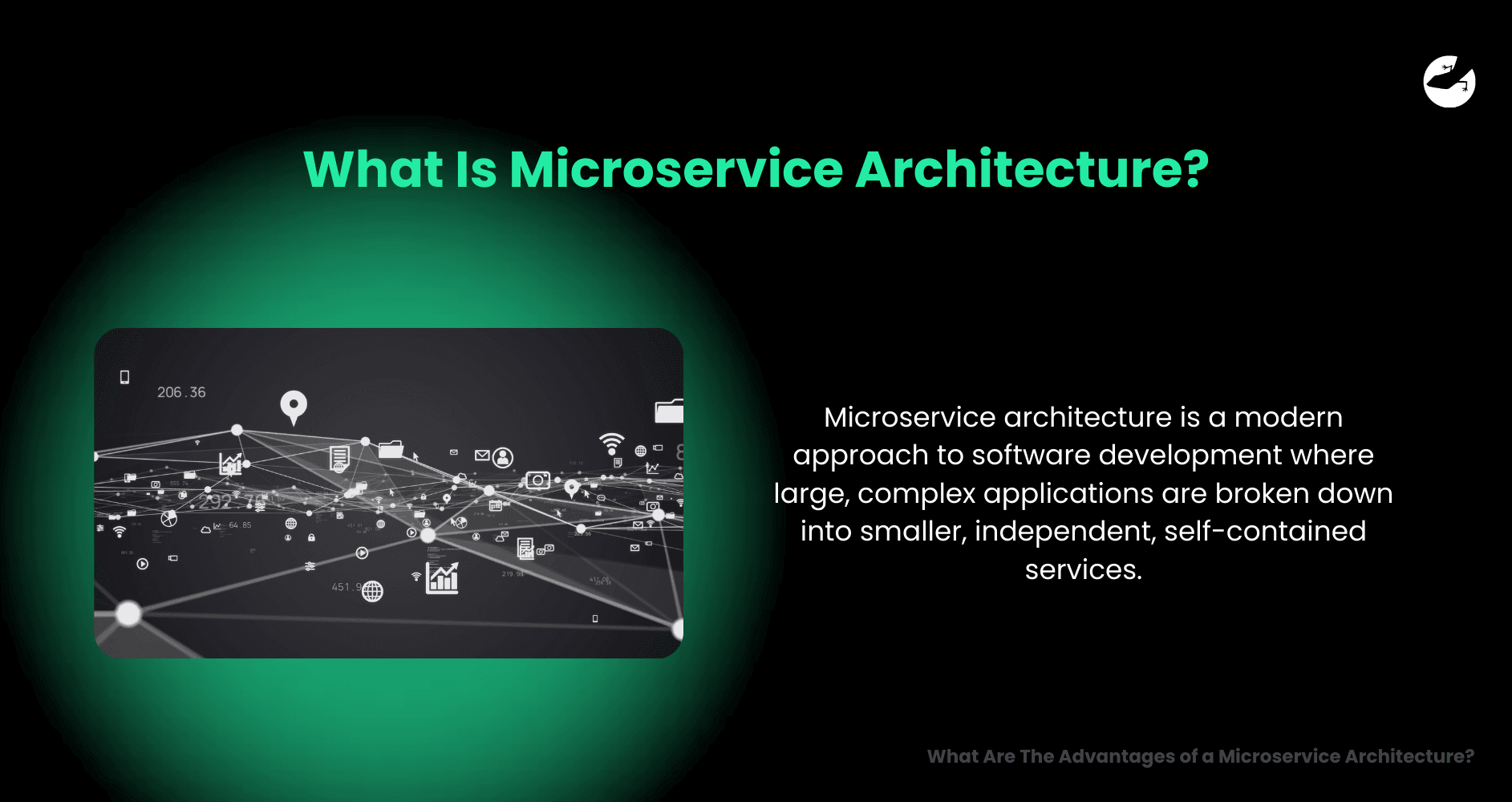
Microservice architecture is a modern approach to software development where large, complex applications are broken down into smaller, independent, self-contained services. Each service performs a specific function and operates autonomously, enabling greater flexibility and scalability compared to traditional monolithic architectures.
At Lizard Global, we rely on microservices to design backend systems that are modular, secure, and highly adaptable. These services are housed within a demilitarized zone (DMZ)—a secure layer that prevents unauthorized access to sensitive information. At the core of this architecture is an API Gateway, which ensures that only authenticated and authorized requests can access these microservices.
Want to find out how much it costs to build your dream app or web app?
Lizard Identity Provider: Authentication with End-to-End Security
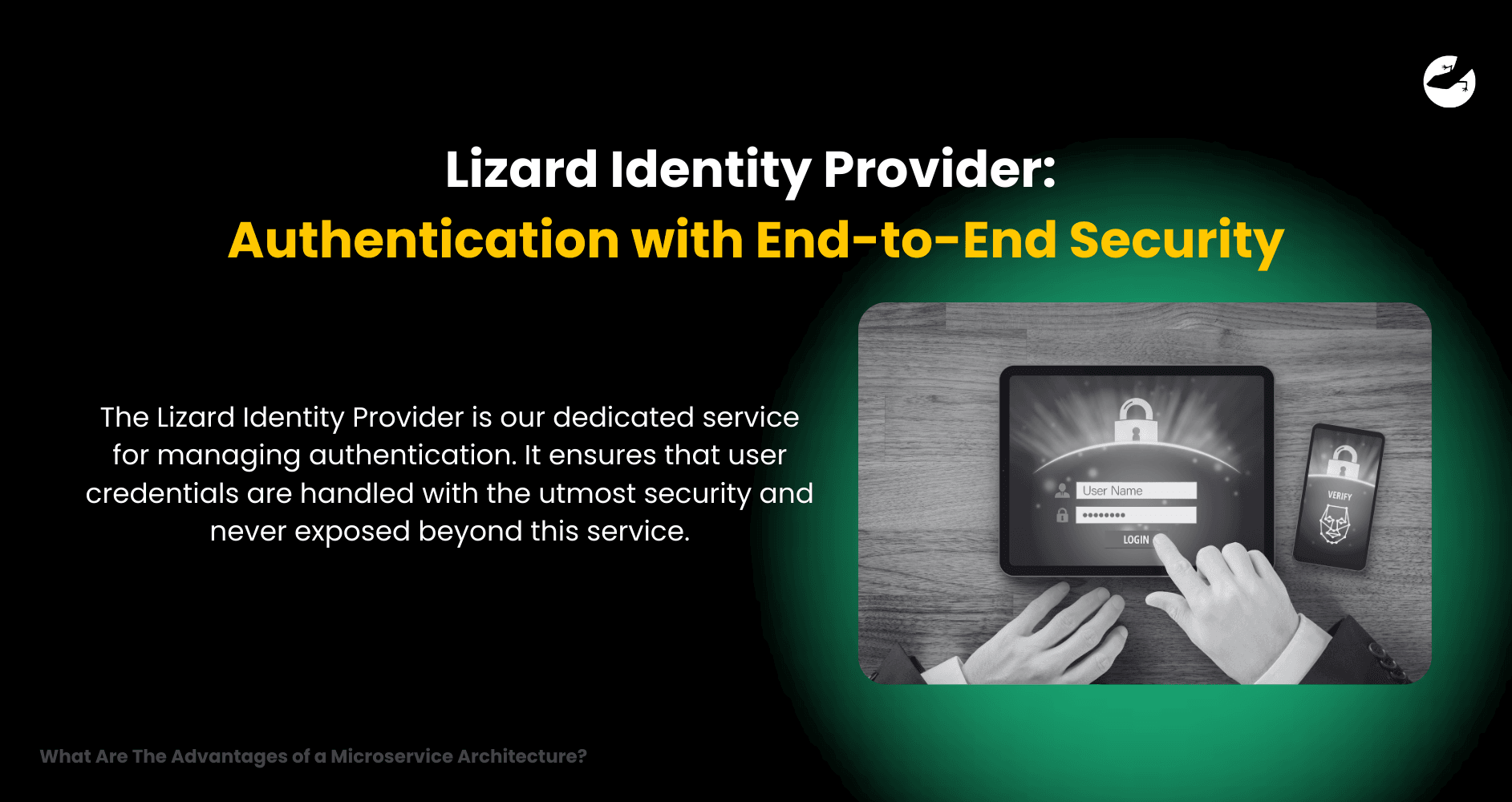
The Lizard Identity Provider is our dedicated service for managing authentication. It ensures that user credentials are handled with the utmost security and never exposed beyond this service. Here’s how it works:
- Authentication Process: When a user logs in, their credentials are passed to the Identity Provider. This service authenticates the user and generates an authentication token (authToken).
- The Role of authToken: Think of the authToken as a digital passport. It grants users access to resources within the DMZ, ensuring secure and controlled interactions.
- Secure Credential Handling: The Identity Provider is the only service that handles user credentials. This eliminates exposure risks and adds an extra layer of security.
We also leverage Supertokens as our authentication service. Each project uses a dedicated Docker container to manage authentication securely. Supertokens' database ensures seamless user authentication across all services.
API Gateway: The Gatekeeper of the Architecture
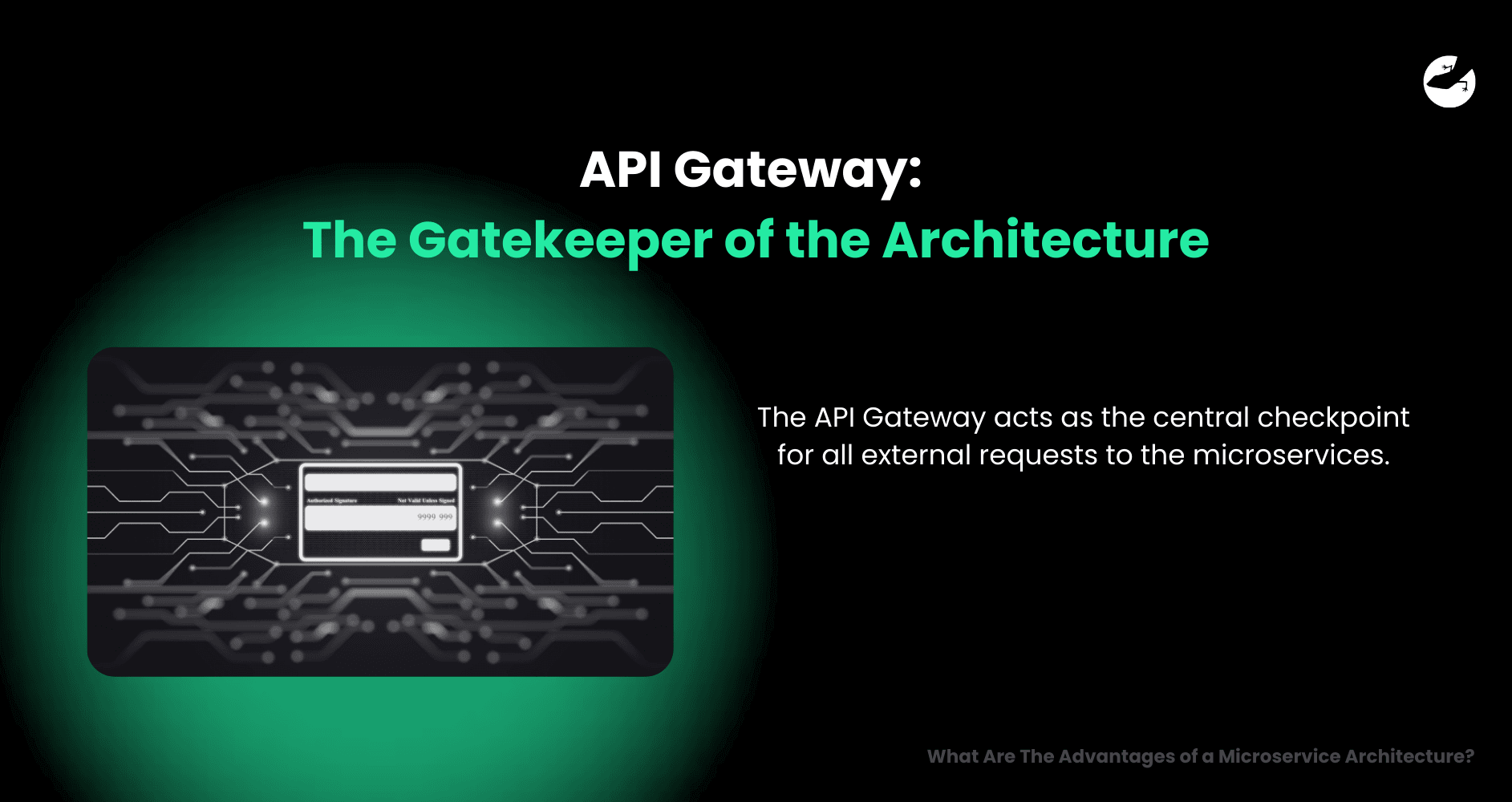
The API Gateway acts as the central checkpoint for all external requests to the microservices.This critical component ensures that access is secure and controlled:
- Authentication Validation: All incoming requests are validated by the API Gateway. If a request lacks a valid authToken, access is immediately denied.
- Minimizing Threats: The Gateway is the only external-facing point of the architecture, significantly reducing the risk of unauthorized access and potential security threats.
At Lizard Global, we use Apollo Gateway to set up our API Gateway. Apollo generates a supergraph by combining the collections of subgraphs defined in individual services, ensuring seamless and efficient communication between them.
Services and Databases: Modular and Autonomous
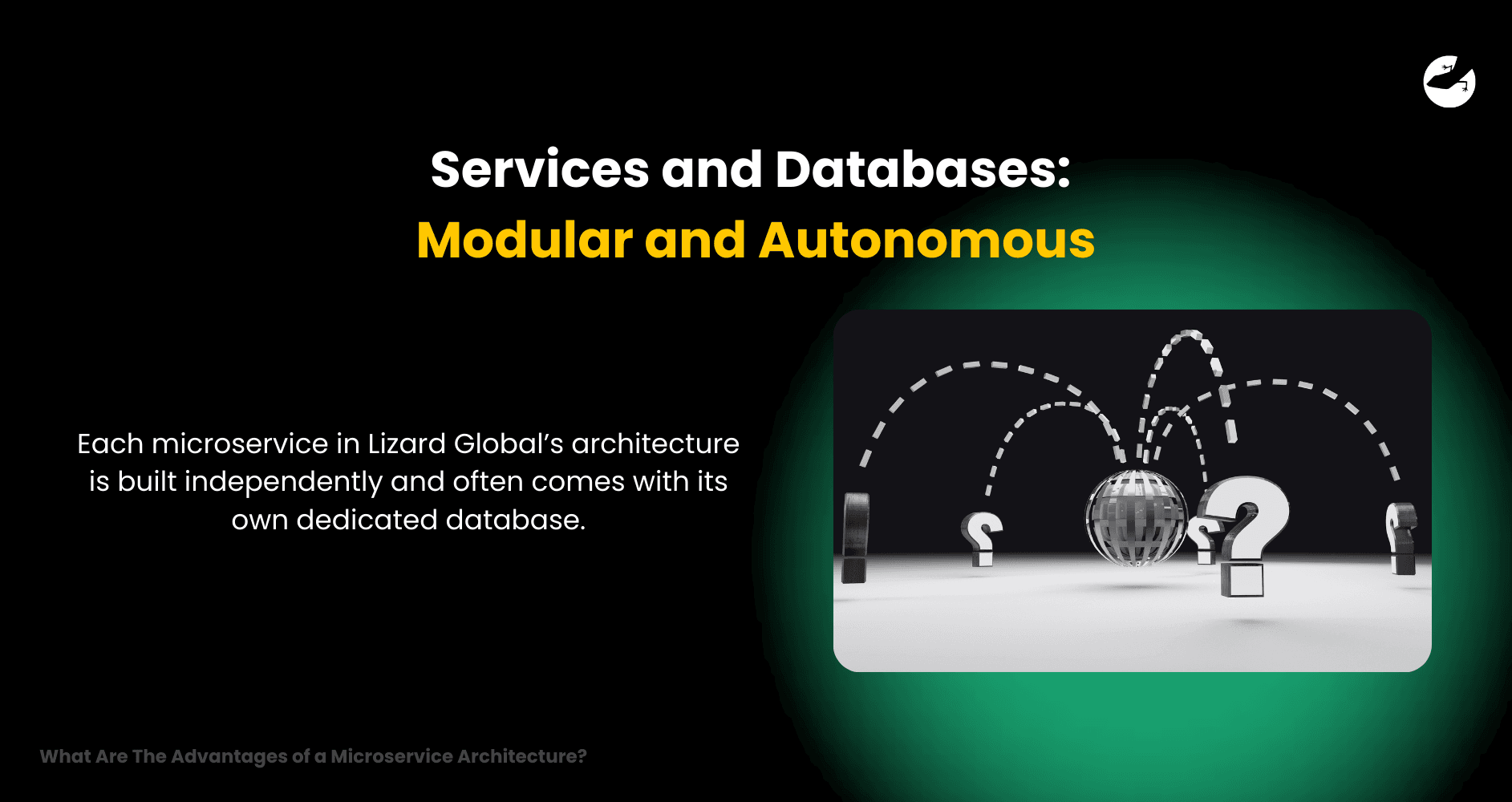
Each microservice in Lizard Global’s architecture is built independently and often comes with its own dedicated database. This modular approach ensures that:
- Independence: Microservices are self-contained and agnostic to the internal mechanics of other services.
- Robustness: Issues in one service won’t affect the performance of others.
- Flexibility:Services can be updated or scaled independently, reducing downtime and improving efficiency.
Our services are built using Apollo Server, with databases such as MongoDB or PostgreSQL to store data specific to each task. Access to these services is restricted and tightly controlled through the API Gateway.
Event Bus: Maintaining Synchronization
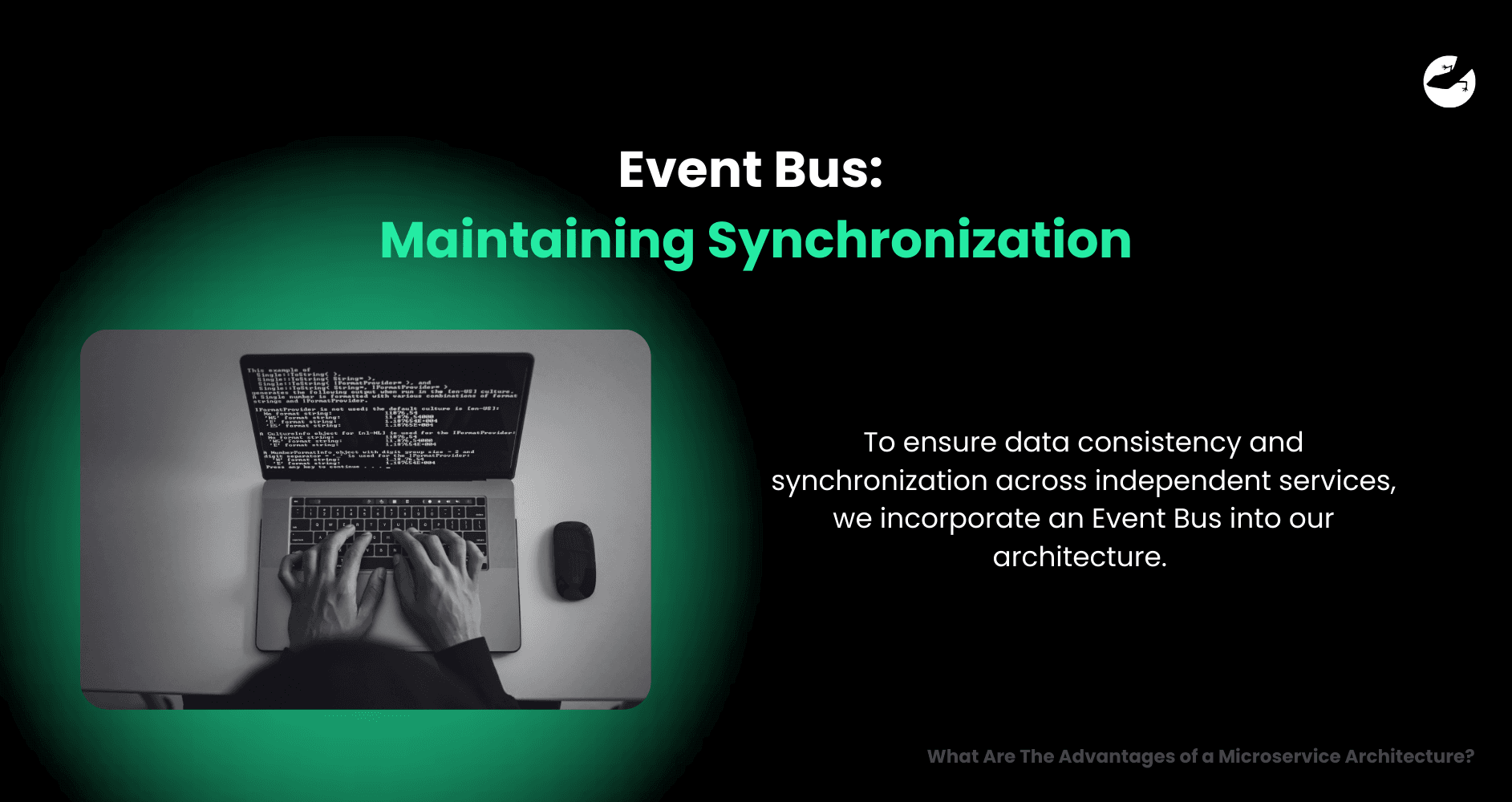
To ensure data consistency and synchronization across independent services, we incorporate an Event Bus into our architecture. This component addresses challenges such as data duplication and service communication:
- Data Integrity: The Event Bus propagates updates and changes across the system, keeping all services in sync.
- Scalability: By decoupling processes, the Event Bus allows the architecture to scale seamlessly.
At Lizard Global, we use RabbitMQ as our Event Bus solution. Acting as a communication intermediary, RabbitMQ ensures smooth data exchange and a highly scalable system.
Interacting with External Systems
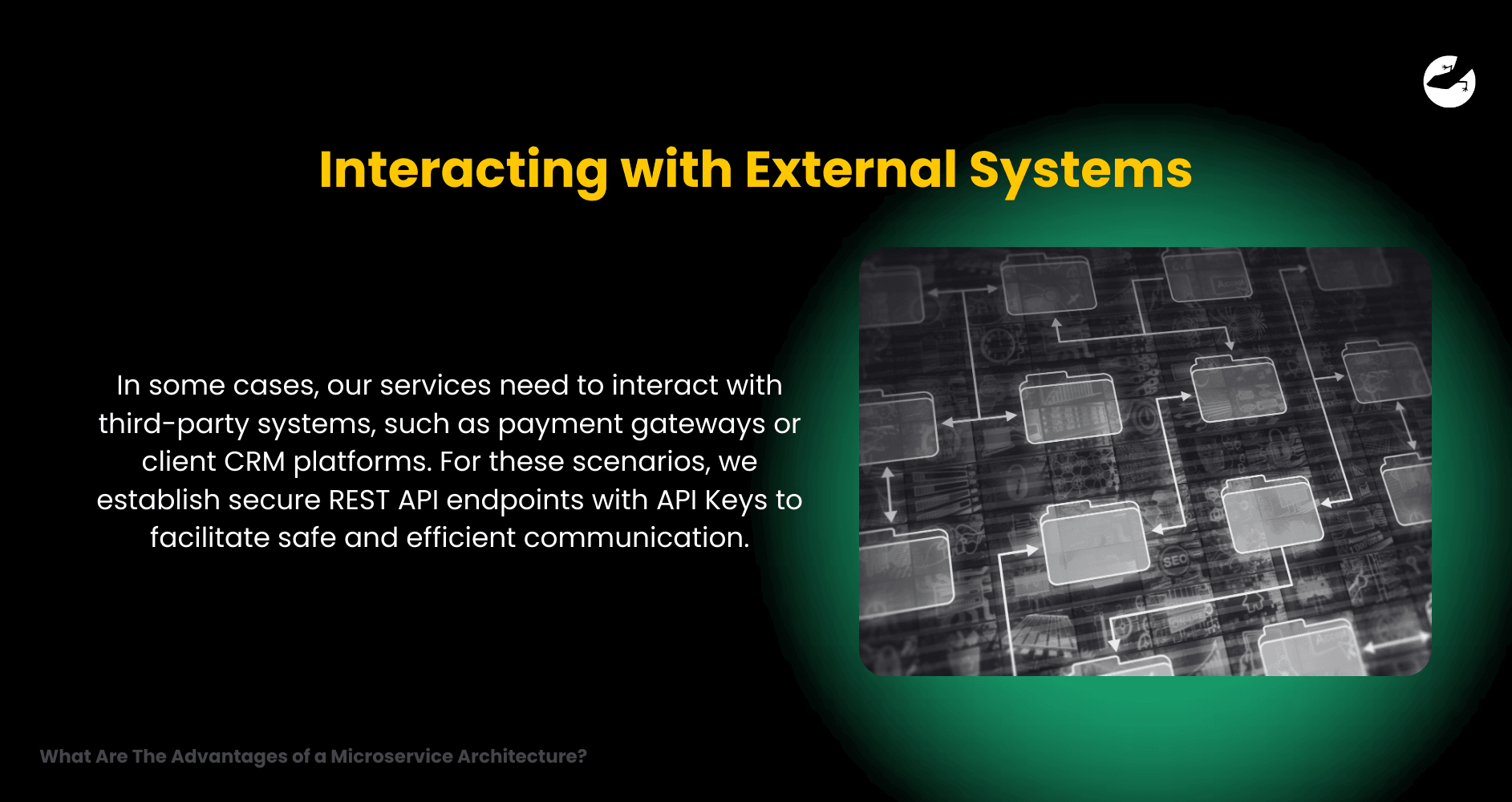
In some cases, our services need to interact with third-party systems, such as payment gateways or client CRM platforms. For these scenarios, we establish secure REST API endpoints with API Keys to facilitate safe and efficient communication.
- Secure Integration: API Keys ensure that only authorized services can interact with external systems.
- Seamless Data Exchange: This approach allows us to integrate third-party services into our architecture while maintaining robust security and efficiency.
What are the advantages of a microservice architecture?
The microservice architecture at Lizard Global is designed with scalability, security, and efficiency in mind. By breaking down large applications into smaller, manageable services, we achieve:
1. Scalability
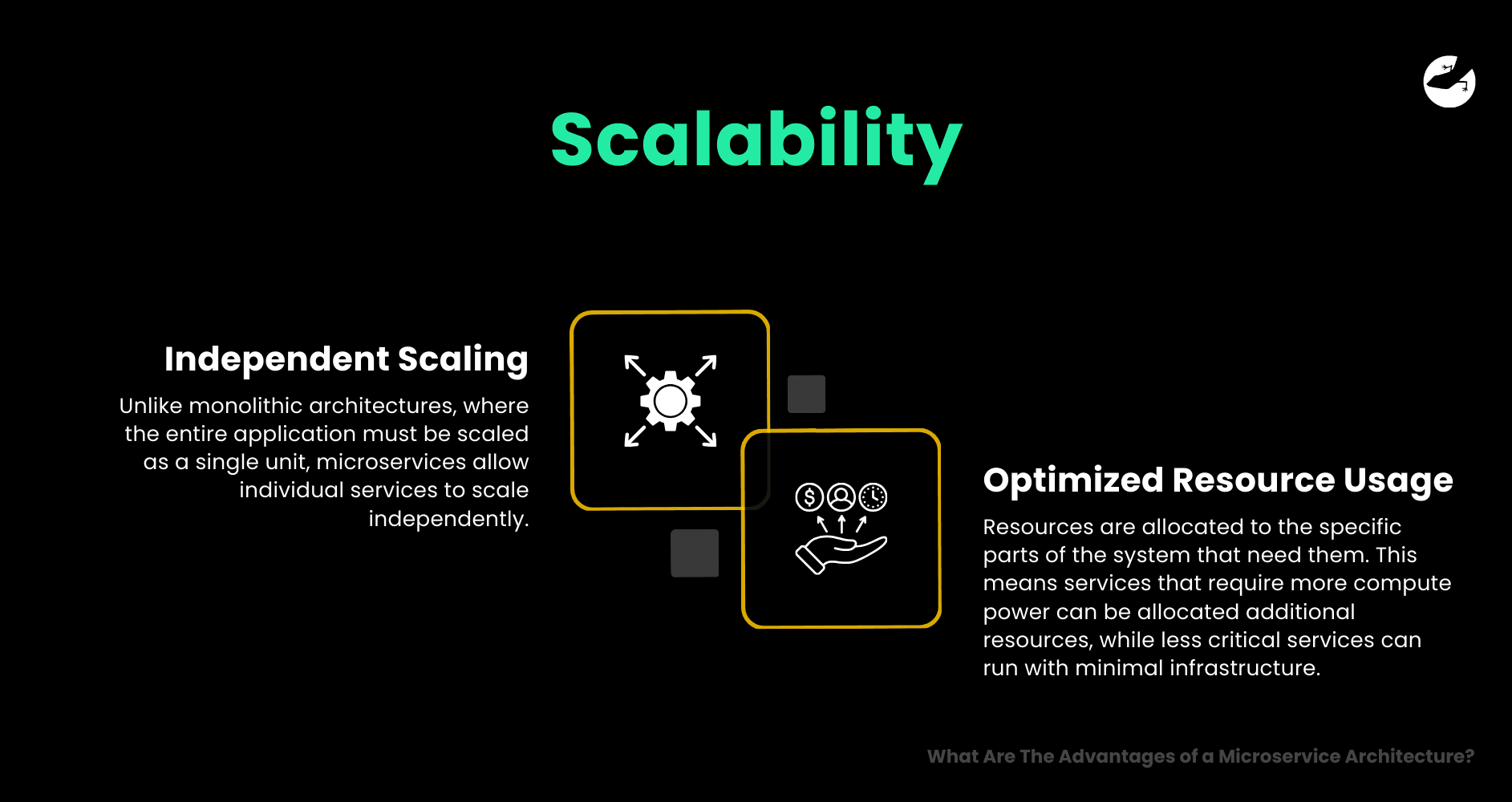
One of the most significant advantages of microservices is their scalability.
- Independent Scaling: Unlike monolithic architectures, where the entire application must be scaled as a single unit, microservices allow individual services to scale independently. For instance, if your payment processing service experiences higher traffic, you can scale just that service without impacting others, saving costs and optimizing performance.
- Optimized Resource Usage: Resources are allocated to the specific parts of the system that need them. This means services that require more compute power can be allocated additional resources, while less critical services can run with minimal infrastructure.
2. Flexibility in Technology
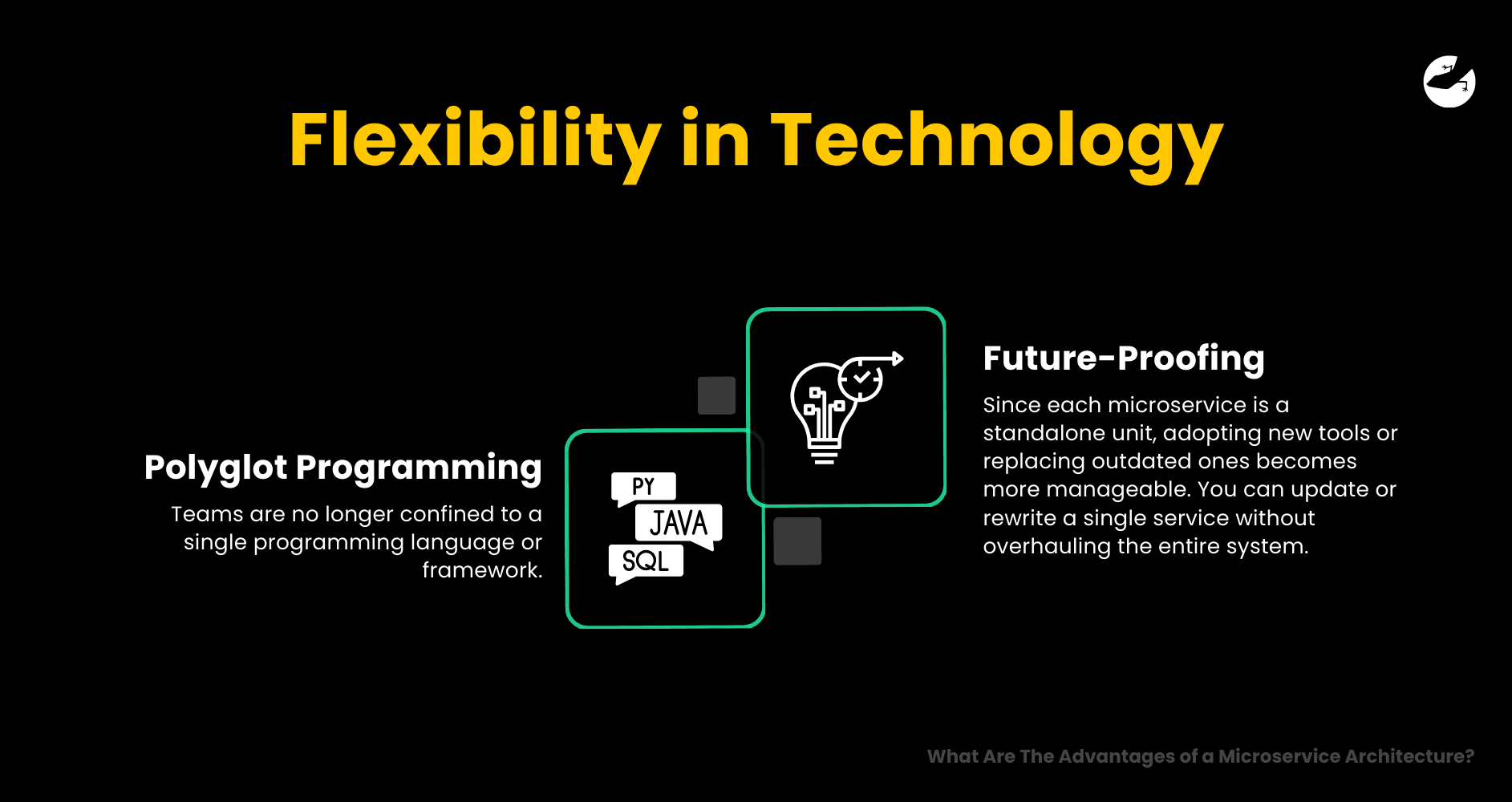
Microservices empower teams to choose the best tools and technologies for the job.
- Polyglot Programming: Teams are no longer confined to a single programming language or framework. Each microservice can be built with the technology stack best suited to its requirements, whether it's Python, Java, Go, or something else.
- Future-Proofing: Since each microservice is a standalone unit, adopting new tools or replacing outdated ones becomes more manageable. You can update or rewrite a single service without overhauling the entire system.
3. Decoupled Development
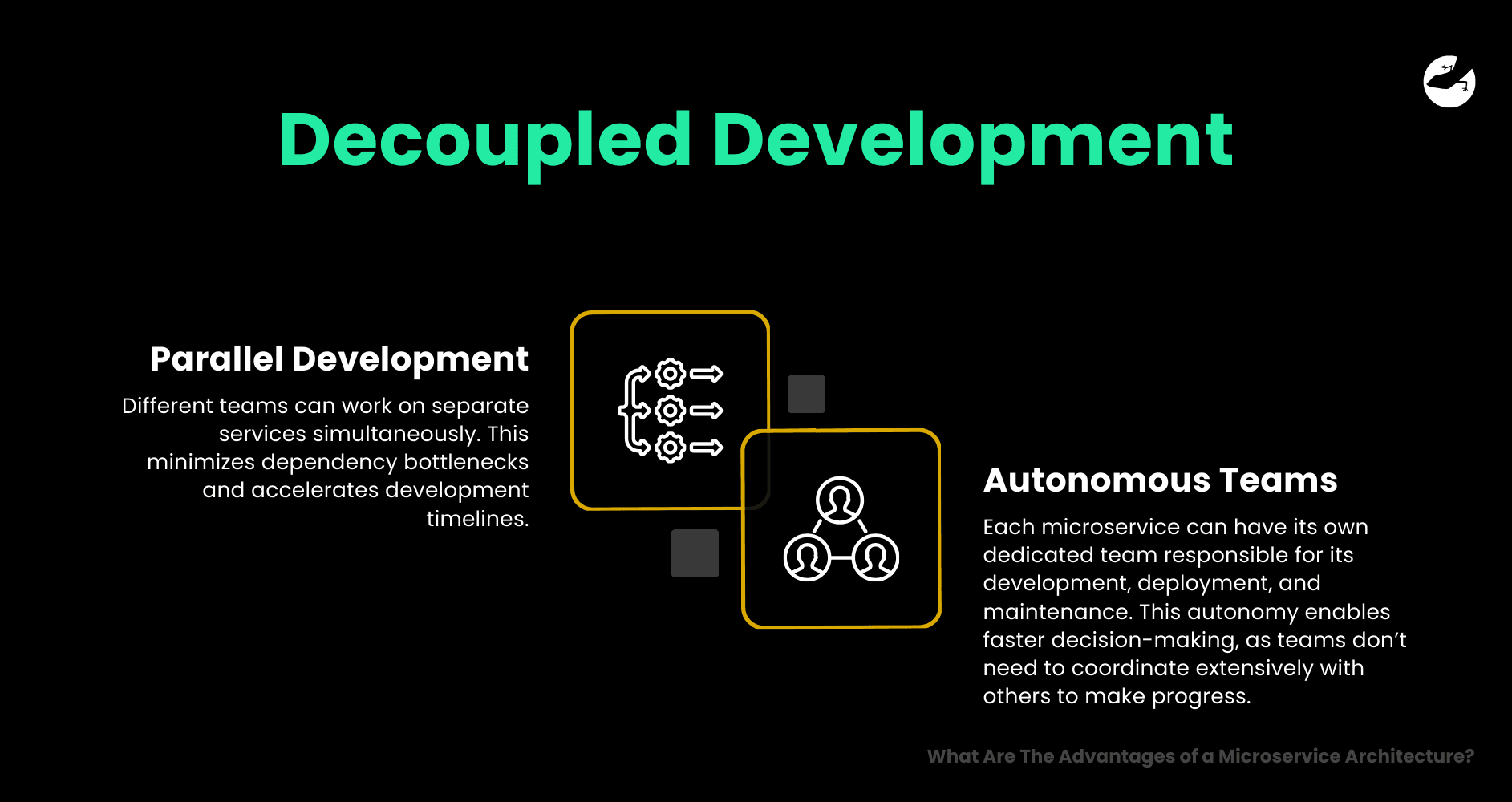
Microservices promote independent and efficient development practices.
- Parallel Development: Different teams can work on separate services simultaneously. This minimizes dependency bottlenecks and accelerates development timelines.
- Autonomous Teams: Each microservice can have its own dedicated team responsible for its development, deployment, and maintenance. This autonomy enables faster decision-making, as teams don’t need to coordinate extensively with others to make progress.
4. Fault Isolation
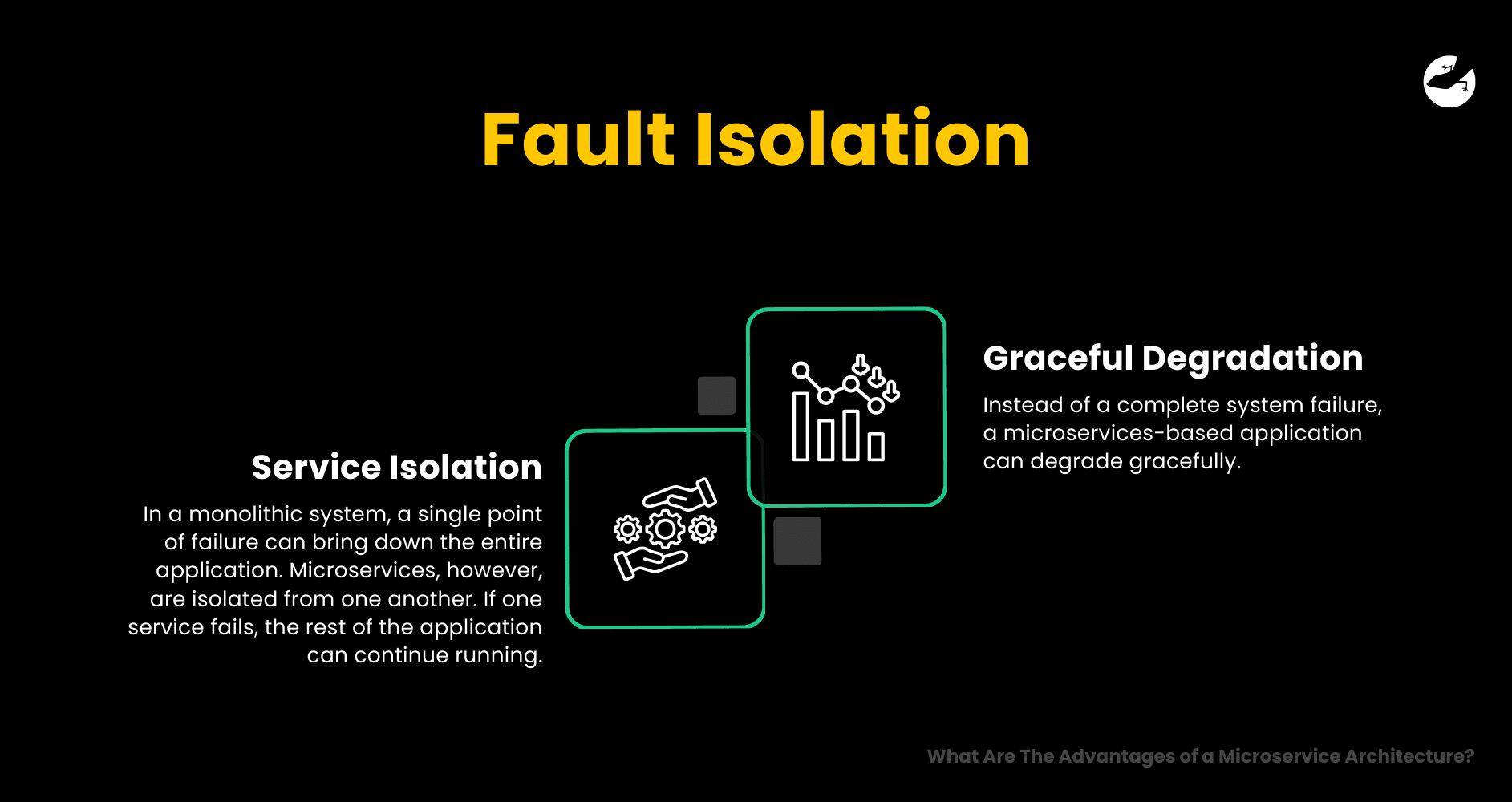
Resilience is built into the core of microservices.
- Service Isolation: In a monolithic system, a single point of failure can bring down the entire application. Microservices, however, are isolated from one another. If one service fails, the rest of the application can continue running.
- Graceful Degradation: Instead of a complete system failure, a microservices-based application can degrade gracefully. For example, if a recommendation service is down, the rest of the application (e.g., user profiles or checkout) can still function normally.
5. Faster Time to Market
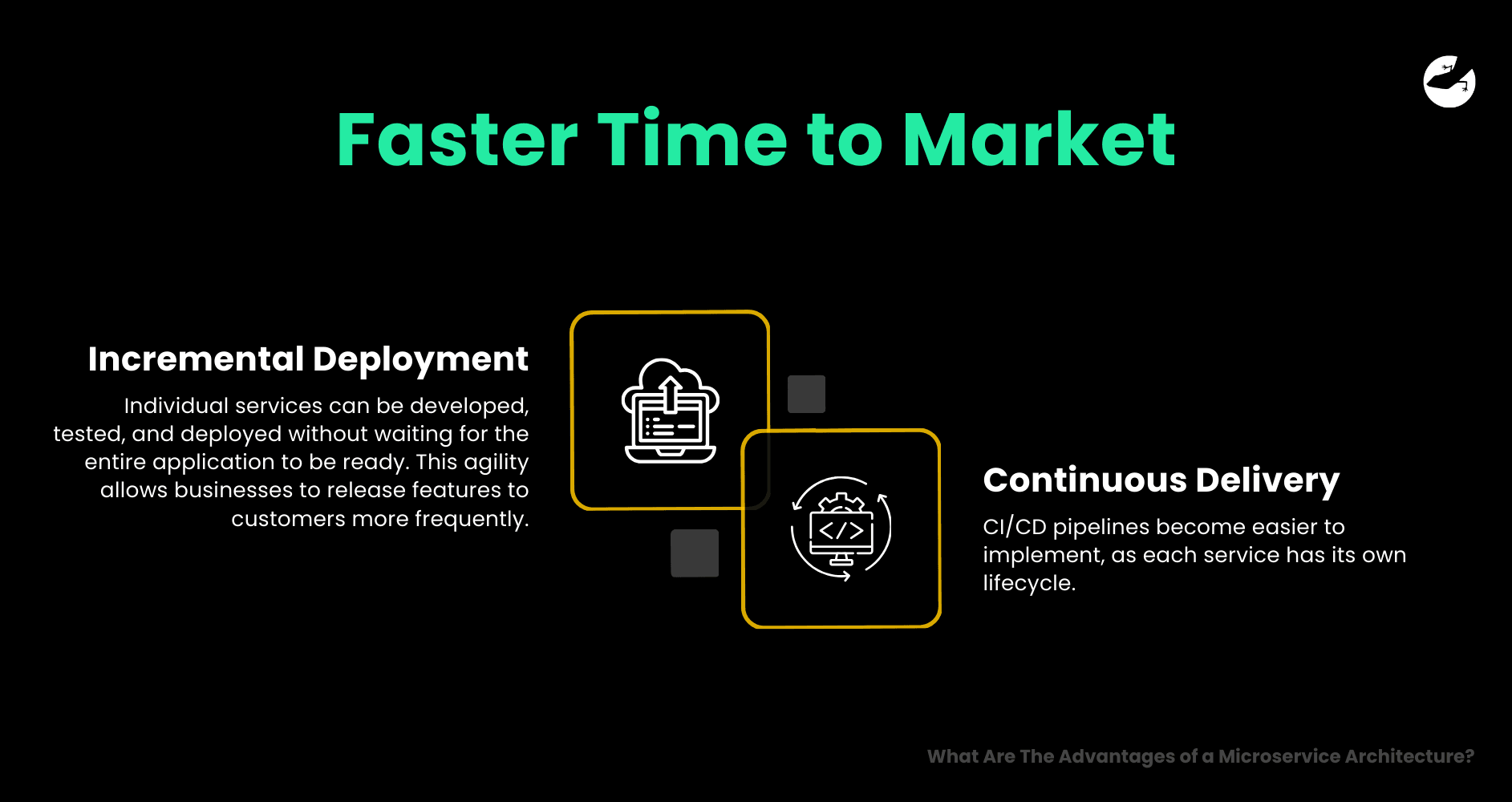
Microservices enable organizations to deliver features and updates more rapidly.
- Incremental Deployment: Individual services can be developed, tested, and deployed without waiting for the entire application to be ready. This agility allows businesses to release features to customers more frequently.
- Continuous Delivery: With microservices, CI/CD pipelines become easier to implement, as each service has its own lifecycle. Teams can roll out updates, fixes, or new features for one service without affecting the rest of the application.
6. Improved Maintenance and Debugging
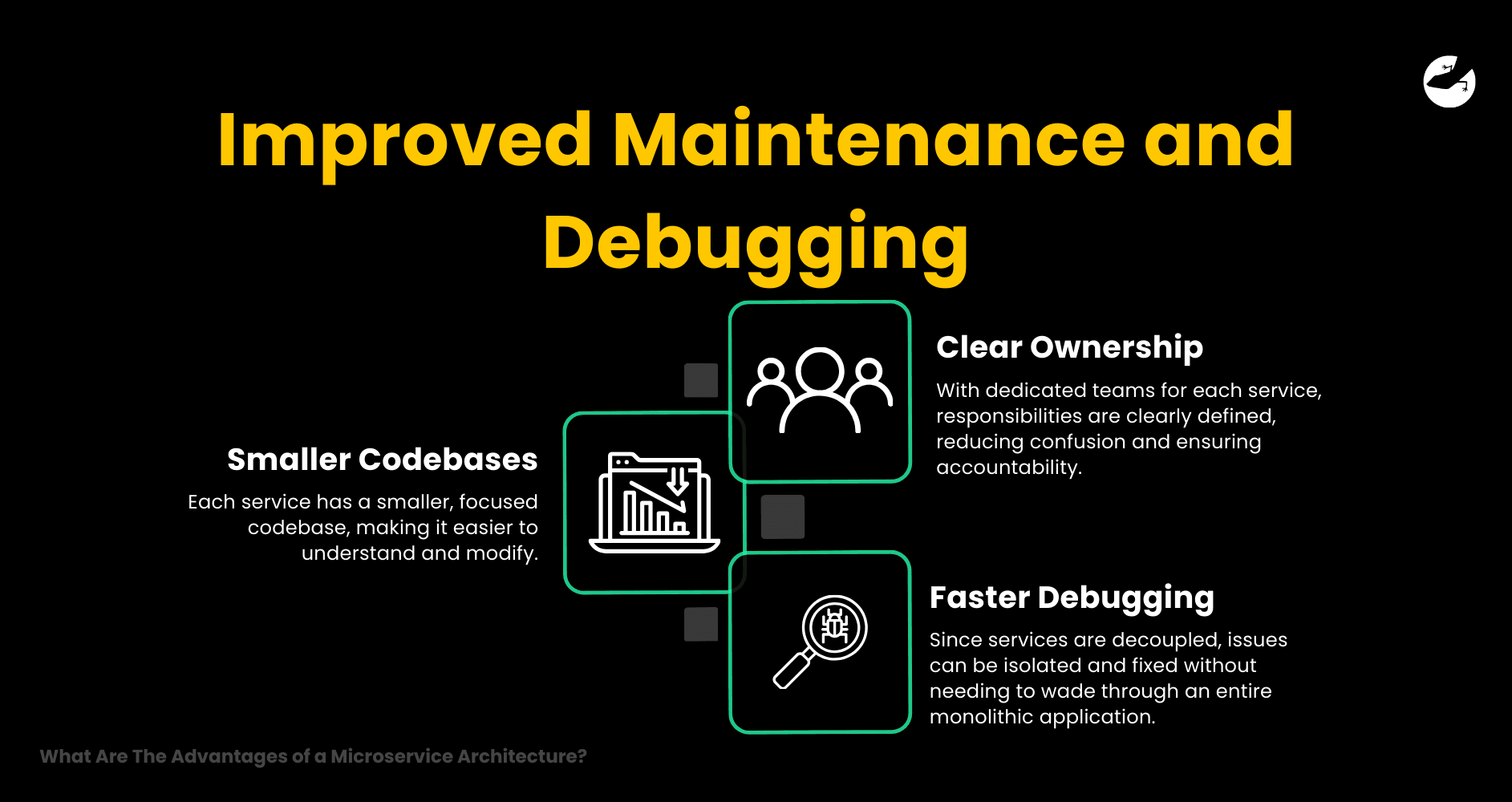
Microservices simplify maintenance and troubleshooting.
- Smaller Codebases: Each service has a smaller, focused codebase, making it easier to understand and modify.
- Clear Ownership: With dedicated teams for each service, responsibilities are clearly defined, reducing confusion and ensuring accountability.
- Faster Debugging: Since services are decoupled, issues can be isolated and fixed without needing to wade through an entire monolithic application.
7. Enhanced Resilience
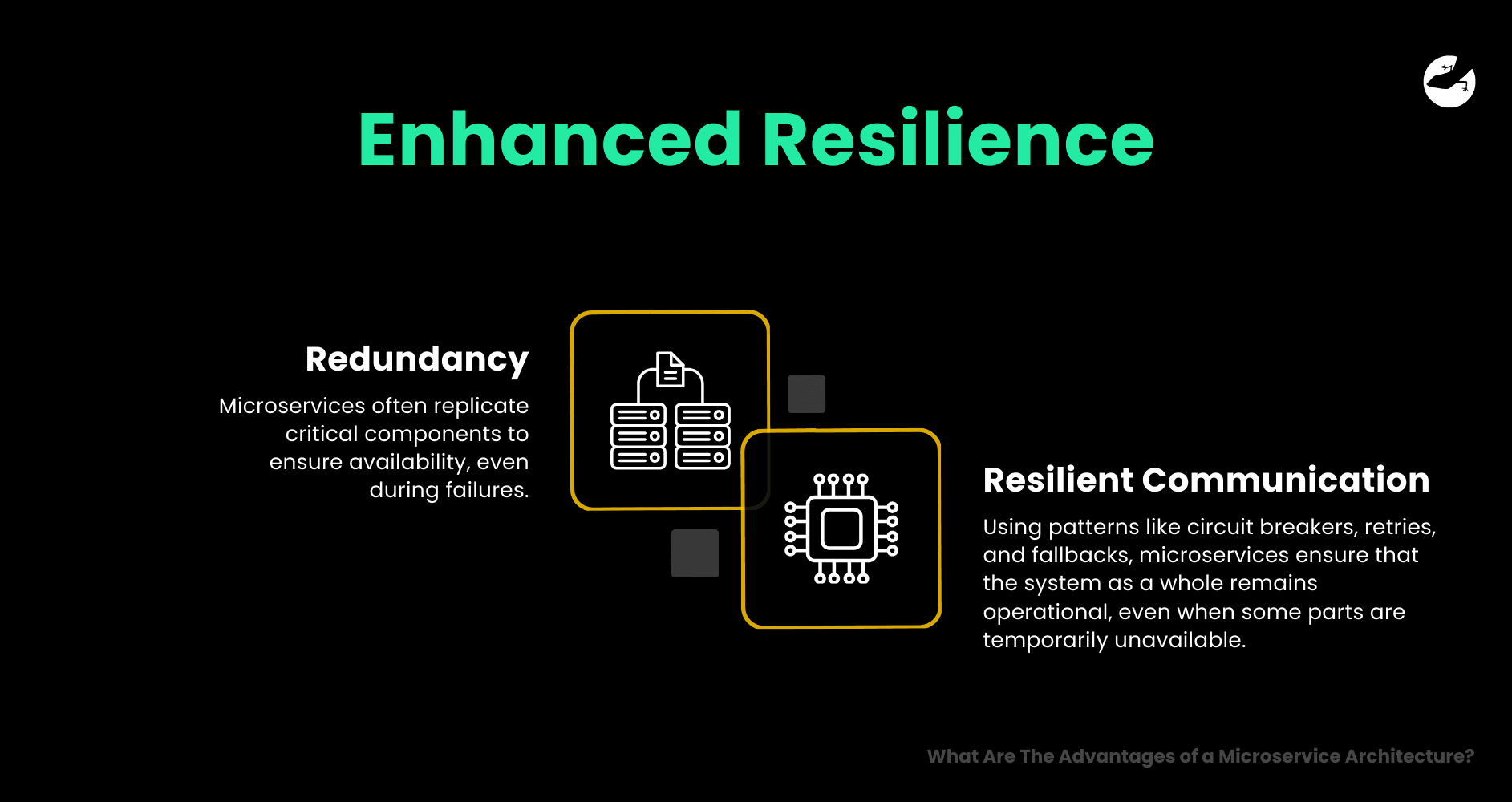
In distributed systems like microservices, the application is designed to handle failures gracefully.
- Redundancy: Microservices often replicate critical components to ensure availability, even during failures.
- Resilient Communication: Using patterns like circuit breakers, retries, and fallbacks, microservices ensure that the system as a whole remains operational, even when some parts are temporarily unavailable.
Let Us Build With You
Microservice architecture is transforming how we build custom software at Lizard Global. By leveraging tools like Supertokens, Apollo Gateway, and RabbitMQ, we create secure, flexible, and scalable systems that meet the demands of modern businesses. Whether it’s handling authentication, synchronizing data, or integrating with external systems, our architecture ensures seamless and efficient operations.

Are you ready to scale your business with cutting-edge backend solutions? Contact Lizard Global today to explore how we can build a secure, scalable system tailored to your needs.



